Related Research Articles

Iman Xin Chemjong Limbu or Iman Singh Chemjong Limbu: was a Limbu historian, writer, linguist, lexicographer, folklorist and philosopher of Nepal. Chemjong devoted his entire life to studying and documenting various facets of Kirat Limbu tradition and culture at a time when such activities were frowned upon and even punished by the Nepalese ruling elite as being subversive and "anti-national". Chemjong's research into, and publication of, a Kirant history and culture challenged perceptions of the Nepalese official doctrine that showcased Nepal as a Hindu cultural monolith devoid of alternative narratives.

Bishnu Kumari Waiba, popularly known as Parijat was a Nepali writer and poet. She is best known for her novel Shiris Ko Phool for which she won the Madan Puraskar, becoming the first woman to receive the award. She published multiple novels and wrote many poems and stories in her lifetime.
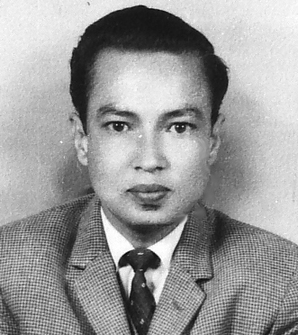
Shankar Lamichhane was a Nepalese essayist and short–story writer. He is best known for his Madan Puraskar–winning essay collection Abstract Chintan Pyaj.

Newar art is the art form practiced over centuries by Newar people. The pictorial art consists of:

Shree Amber Gurung was a Nepalese composer, singer, and lyricist. He composed Nepal's national anthem, "Sayaun Thunga Phulka".
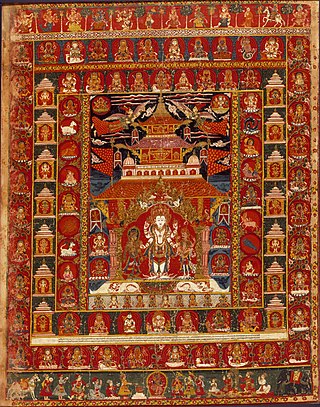
Nepalese Painting or Nepali Painting begins with the religious paintings with Hindu and Buddhist subjects, almost all Newa art by the Newari people of the Kathmandu valley. These traditional paintings can be found in the form of either wall paintings, cloth paintings called paubha, or manuscripts. They used conservative technique, style, and iconography in their works for centuries.

Indian Gorkhas also known as Nepali Indians, are Nepali language-speaking Indians. The modern term "Indian Gorkha" is used to differentiate the ethnic Gorkhas from Nepalis.
Percy Brown (1872–1955) was a renowned British scholar, artist, art critic, historian and archaeologist, well known as an author on Indian architecture and art, especially for his studies on Greco-Bactrian art.
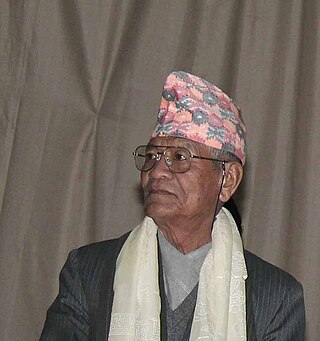
Til Bikram Nembang Limbu, professionally known as Bairagi Kainla or Bairagi Kaila, is a Nepalese poet and litterateur. He has served as Chancellor of the Nepal Academy from 2009 to 2013. Part of his significant literary struggle was the Tesro Aayam movement. During the early 1960s, he with Ishwor Ballav and Indra Bahadur Rai searched unexplored realms of Nepali literature and added a new dimension – the third dimension – to Nepalese literature.

Ratna Pustak Bhandar is a privately owned distributor, publisher and retailer of books in Nepal's capital city, Kathmandu, and is the oldest bookstore in Nepal.
Events from the year 2002 in Nepal.
Uday Sotang Rai, credited as Uday Sotang is a Nepali musician and singer. He has written and composed numerous songs, and sung many of them himself. Most of his songs have been rendered by his wife Manila Sotang.
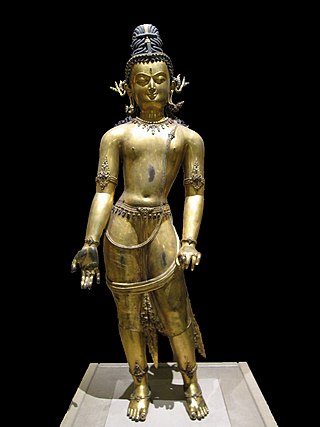
The sculpture of Nepal is best known for small religious figures and ritual objects in bronze or copper alloy, but also has other strengths. The Newar people of Nepal had a long-lasting specialism in casting small bronze figures, mostly religious and especially Buddhist, considerable numbers of which were exported to India and Tibet over many centuries.

Shashi Bikram Shah is a Nepali artist born in Kathmandu in 1940, and with a career spanning five decades, is regarded as one of the preeminent contemporary artists of Nepal and one of the country's first modernist painters.

Nepal Art Council is a non-profit organization established in 1962 to promote the art and the artist of Nepal. It operates an art gallery located at Baber Mahal, Kathmandu, with an area of about 29,400 sq. ft.
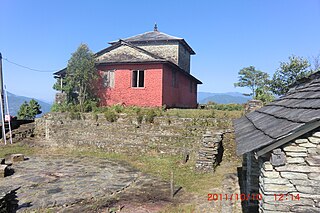
The Kingdom of Kaski was a petty kingdom in the confederation of 24 states known as Chaubisi Rajya. Kaski was annexed to the Kingdom of Nepal during the Unification of Nepal.

The Statue of Laxmi-Narayan is a historic Vaikuntha Kamalaja murti (statue) that composites the androgynous form of the Hindu god Vishnu and his consort Laxmi. The statue dates back to the 10th to 15th century and it was originally located in Patan, Nepal. The statue had been worshipped for 800 years until it was stolen in 1984 and ended up at the Dallas Museum of Art in the United States, before being returned to Nepal 37 years later on 5 March 2021. On December 5, 2021 statue is reinstated in Narayan temple, Patan lalitpur

Surya Bikram Gyawali was a Nepali historian. He wrote biographies for numerous people including King Prithvi Narayan Shah and writer Bhanubhakta Acharya. Gyawali also served as a head teacher in Darjeeling. He is also a recipient of the Order of Gorkha Dakshina Bahu, the Order of Tri Shakti Patta, and the Tribhuvan Puraskar (1971).

Peter John Karthak was a Nepalese writer, musician and journalist. He wrote two novels, several poems and short stories and edited and wrote for multiple newspapers in his life. He is best known for his Sajha Puraskar–winning novel, Pratyek Thau: Pratyek Manchhe.
Kiran Manandhar is a Nepalese artist, who was the founding chancellor of Nepal Academy of Fine Arts from 2010 to 2014. He is considered one of the pioneering Nepalese abstract expressionist painters.
References
- ↑ "कला र साहित्यका अग्रणी पुरुष: लैनसिंह बाङ्देल". Farakdhar || Nepal's Online Magazine. Retrieved 13 January 2022.
